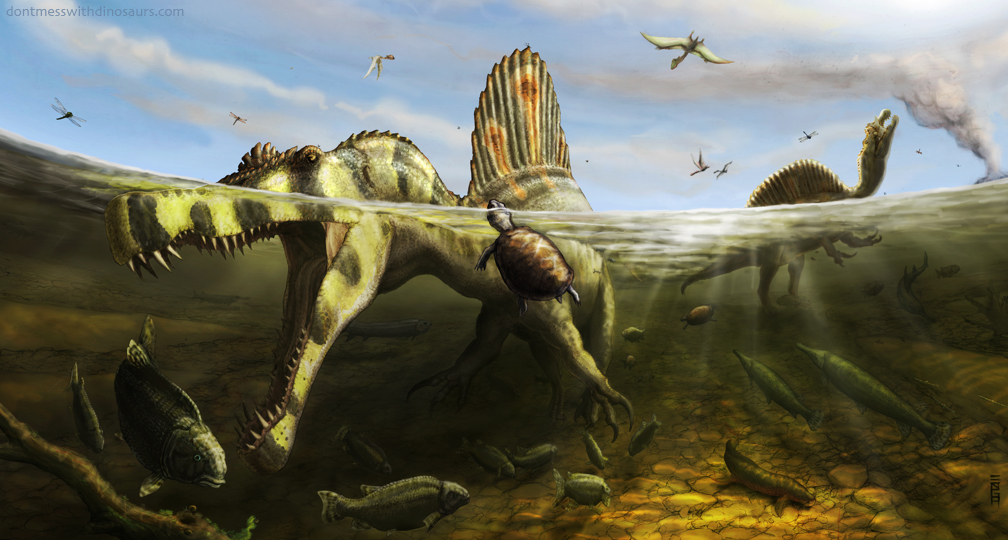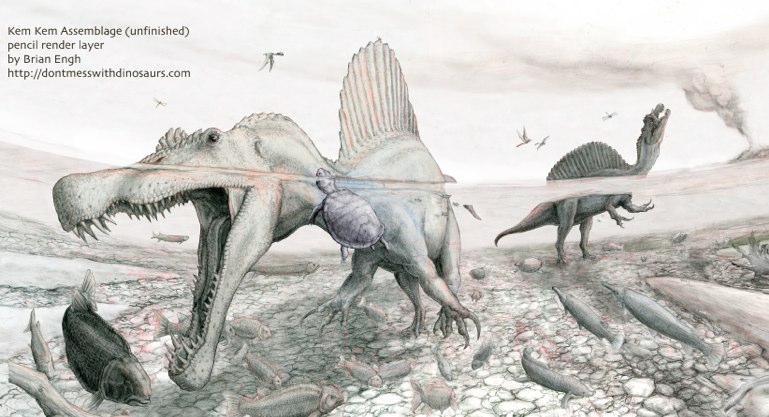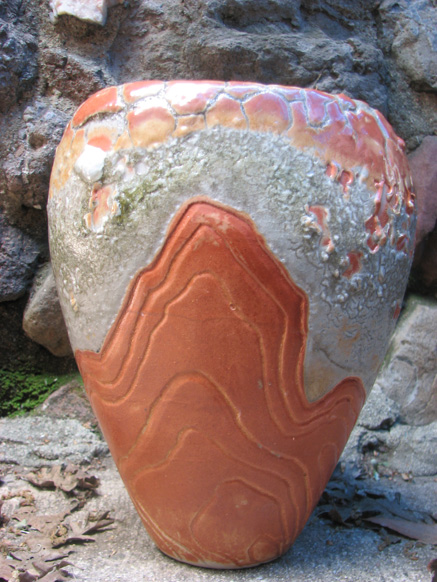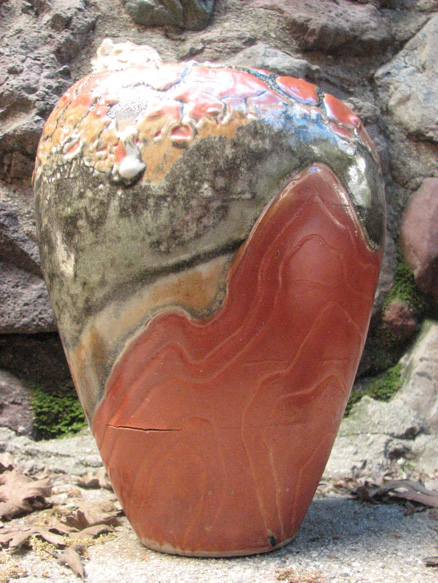Spinosaurus aegyptiacus – Kem Kem Assemblage
Spinosaurus aegyptiacus with jaws agape trawls for mesozoic fish. Reconstruction of the Cretaceous ecosystem recorded in the Kem Kem beds of Morocco. Illustration by Brian Engh under the scientific guidance of Tor Bertin.
The big gnarly looking fish in the foreground are of the genus Lepidotes, reconstructed based primarily on L. maximus. These fish had rows of flat peg shaped teeth adapted for crushing mollusks, and the one foremost in the frame is eyeing an aquatic snail grazing on the algae-covered driftwood. In the background a couple large predatory tarpon (Cladocyclus pankowskii) can be seen gliding along stealthily. In the foreground observing everything is a giant side-necked turtle (Galianemys whitei). Further back in the frame, swimming around the Spinosaur’s hip area are some small fish that we shall say are of the genus Diplomystus. Between the two spinosaurs another Galianemys swims. In the foreground in front of the background Spinosaur a lungfish (Ceratodus humei) patrols the bottom for molluskan prey, ambling along on its leg-like fins. Just right of the lungfish two large cretacious gar of the genus Oniichthys survey their domain. Way in the back just to the right of the background Spinosaur, a school of Lepidotes and a sawshark (Onchopristis numidus) flee in the wake of the Spinosaur’s piscivorous predation. In the air above the Spinosaurs flies and dragonflies buzz about as Tepejarid and Siroccopteryx/Coloborhynchus pterosaurs soar majestically above.
I did this illustration for a paper being published by a paleontologist named Tor Bertin. It was super exciting to work with a scientist on a paleo illustration for the first time. He provided me with the science that made reconstructing this environment possible as well as the grounding to keep my imagining of these animals vibrant and believable without becoming overly speculative or sensational.
Obviously Spinosaurs are really weird looking dinosaurs, so for this illustration I was attempting to imagine them in a behavioral routine that made sense of their very strange anatomy. It is clear from spinosaur teeth and jaw structure that they have adaptations specific to catching fish, and there is evidence in their bone chemistry that Spinosaurs spent much of their time submerged in water. Also, it appears that spinosaurs had pressure sensing pores in their jaws, similar to crocodiles. These pores allow crocodiles to hunt by sensing the movements of fish in the water around their jaws. All that makes sense for a fish eating predator… So why a huge sail?
The best I can do here is speculate based on the observable behavior of extant animals. It occurred to me that crocodiles, grizzly bears (particularly when hunting salmon runs) and hippos might be good analogues for Spinosaur behavior. All are large, territorial animals that spend some (bears), most (hippos), or nearly all (crocodiles) of their time in rivers. As a result they all do a lot of territorial posturing to defend their stretch of the river. Bears, bellow and stand on their hind legs, hippos vocalize, raise their head and bear their tusks, and crocodiles do a lot of subtle body posturing with their back and head, as well as some vocalization. Of course with crocs a lot of these behaviors are more subtle because stealth above the water is key to their predatory success. Spinosaurs don’t appear to have been well equipped for killing anything other than fish, so a huge display structure above water wouldn’t have hindered their success as hunters. Rather, it might’ve allowed them to broadcast their body language further while at the same time keeping those sensitive fish-trap jaws down in the water hunting. It could also have helped display to mates. In all, it would’ve allowed Spinosaurs to communicate with body language above the water, while still actively hunting below the water. This would’ve increased food intake and decreased combative encounters while at once helping to attract mates. All of which would’ve contributed to greater survival for the individuals with big beautiful communicative sails.
That’s what I was thinking when I drew this, anyway… Let me know what you think.
Thanks for stopping by!






